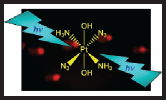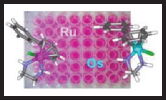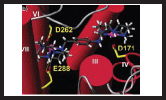The Periodic Table of Life
 |
 |
 |
Background
Inorganic chemistry is just as important in medicine as organic (carbon) chemistry. Some diseases and conditions can be cured only with inorganic compounds, for example anaemia, often caused by a deficiency of Fe, but also of Cu and Co.
The ancient Indian Ayurvedic system of medicine dates back about 5,000 years BC and used drugs derived from metal and mineral sources in healthcare, including Hg, Au, Ag, Pb, Zn and Cu. The use of Fe oxide for anaemia and Cu for inflammation is well documented in the ancient Egyptian medical Ebers Papyrus (ca. 1550 BC). Chinese use of ‘stone (mineral) drugs’ dates back over 2,000 years, including Fe sulfide and Hg chloride, animal fossils, and minerals rich in trace elements, e.g. Li and Zr.
Then, as today, the emphasis was on finding a safe window of use, efficacy without toxicity. This is tricky. For some elements the safety window is narrow and dependent on other elements, and moreover depends very much on the chemical composition of the compound, not just the element itself. Deciphering the genetic codes for essential elements (e.g. how our cells know that a specific metal ion is needed in a particular protein and in that specific position) would be a giant leap forward, but we may never be able to achieve it. The chemistry of life may be continually adapting to the environment we live in. In addition our health depends on living a symbiotic life with many microorganisms, which perhaps need different elements to us.
Today Pt drugs are the most widely used in cancer chemotherapy, bipolar disorders are treated with Li, Ag compounds used everywhere as antimicrobials, Mg compounds as laxatives, parasitic diseases are treated with Sb compounds, Gd compounds are contrast agents in MRI, Au compounds for rheumatoid arthritis, Bi compounds are antacids and antiulcer, Fe for anaemia, Cu in contraceptive devices, Zn in skin creams, La for controlling serum phosphate, radioactive isotopes (especially Tc) in diagnosis and therapy, as well as a wide range of mineral supplements.
Our aim is to replace empirical medical use with rational design and molecular (atomic) understanding of the mechanism of action of metallodrugs. Their metabolism needs to be understood and targets identified. Mapping the chemistry of metals and their ligands in cells and tissues on timescales of nanoseconds to hours and on length scales of nano to centimetres is a massive challenge which requires application of state-of-the-art analytical technology.
Sadler Group Research
1. We have discovered precious metal anticancer drugs which can combat Pt resistance. Our organometallic half-sandwich osmium compounds attack the weakened redox system in cancer cells, and not nuclear DNA as cisplatin does. Our catalytic organometallic compounds work at low doses and carry out unnatural transformations which block biochemical pathways in cancer cells.
Our new platinum and iridium anticancer complexes are not toxic until they are activated selectively in cancer cells by low doses of visible light.
2. We are exploring the relationship between iron and copper mineralisation in the brain and neurological disorders.
Our research involves complementary use of nano-focussed x-ray spectroscopy, ultra high resolution mass spectrometry and a range of other analytical techniques.
Read more about our research here:
https://warwick.ac.uk/fac/sci/chemistry/research/sadler/sadlergroup/
